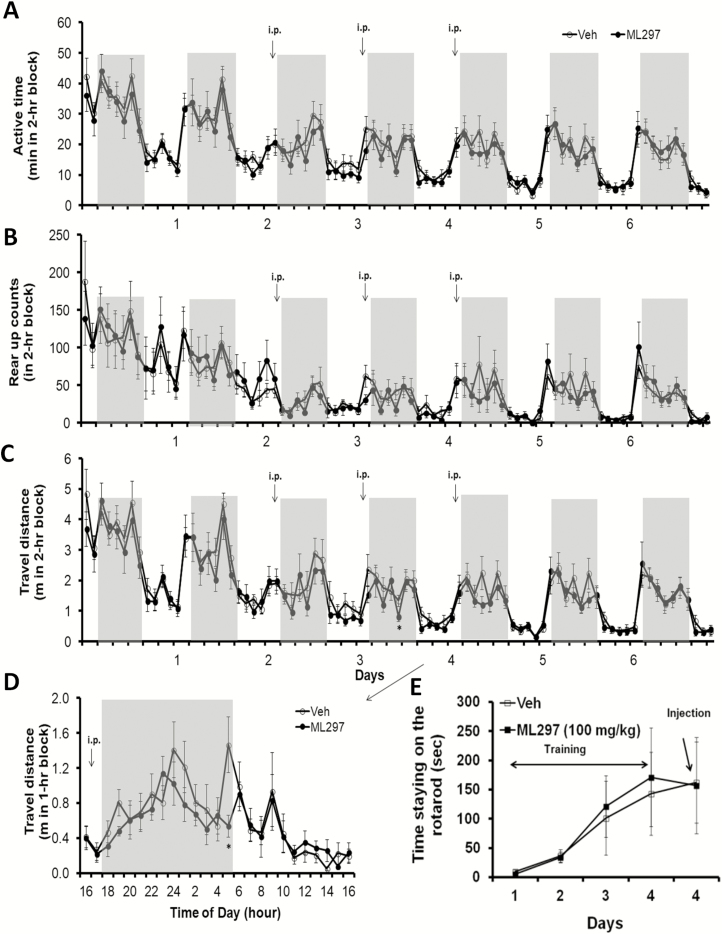Figure 3.
Effects of activation of GIRK channels with ML297 on mouse spontaneous activity, rearing, locomotion, and rotarod performance. Individual mice in fresh homecages that were placed within the SmartCage platforms were continuously monitored for 7 days under normal 12/12 (light/dark) hr cycle. The initial 2 days of recordings during accommodation to the new environment served as a baseline. Daily dosing of ML297 was performed (30 mg/kg, i.p.) 5–10 min prior to the dark onset on 3 consecutive days and animals were continually monitored for another 2 days of recovery after washout of the drug. (A) Active time calculated based on time spent in active state in 2 hr bins was plotted against days of recordings. (B) Rearing activity was measured by automatically counting rearing up episodes detected by the upper row of IR sensors. (C) Travel distance measured by integrating traveling distance along movement trajectories. (D) Travel distance taken from day 4 was plotted in 1 hr bins. All three key parameters indicate that ML297 reversibly reduced active time and inhibited mouse spontaneous activity in dark period. The asterisk * indicates p < 0.05 (n = 8 per group). The gray shadow indicates dark phase (light on 7 am and off at 7 pm). (E) The modular rotarod device was connected to and controlled by the behavior monitoring system. Time on the rotating rod was averaged and plotted as a function of days in a time course. After the last training on day 4, ML297 (100 mg/kg, i.p.) was administered in one group while another group received vehicle (n = 8/group).

